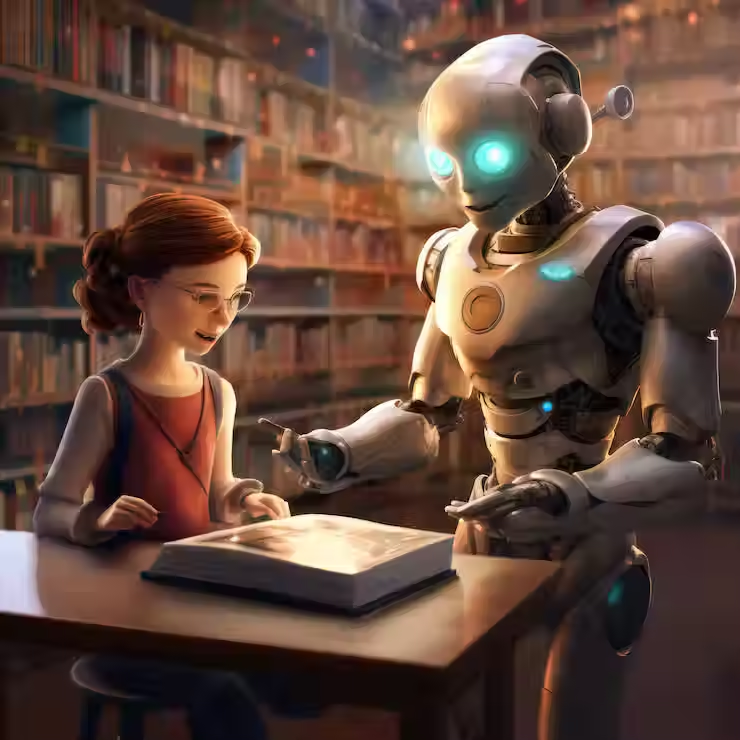What Is the Best Way to Learn About AI as a Student?
- marketing84542
- 11 hours ago
- 3 min read

AI is reshaping every aspect of our world—from how we search and shop to how we study and create. For today’s students, understanding AI isn’t optional. It’s essential. But what’s the best way to learn about artificial intelligence in a way that’s age-appropriate, engaging, and truly educational?
In this blog, we break down what AI literacy really means, why it matters for K–12 students, and how LittleLit is making AI learning creative, safe, and fun.
Key Takeaways:
AI literacy helps students understand how AI works, its role in society, and how to use it ethically.
Learning AI should start with foundational lessons before jumping into tools or chatbots.
Hands-on projects make abstract AI concepts real and exciting for kids.
LittleLit offers the only child-safe, K–12-ready AI curriculum with creative tools and guided lessons.
Why Do Students Need AI Literacy?
AI literacy is more than knowing how to use ChatGPT. It means understanding how AI learns, what it can and can’t do, and how it influences our lives—from social media algorithms to self-driving cars.
In a world where AI tools are becoming as common as calculators, students must learn:
How algorithms make decisions
Where bias in AI can show up
What responsible and ethical AI use looks like
When students develop this foundational understanding early, they’re not just tech consumers—they become thoughtful creators, leaders, and decision-makers.
What Is the First Step in Learning AI? "Learn Before Use"
The biggest mistake in AI education? Handing students powerful tools before they understand what’s under the hood.
That’s why every student should start with the basics:
What is AI and how does it work?
What are the different types of AI (e.g., narrow AI, generative AI)?
How does machine learning train an AI to "think"?
Explore the AI Curriculum for Kids from LittleLit — designed just for K–12 learners. It includes guided modules on AI basics, ethics, and real-world applications. Everything is kid-friendly, safe, and aligned with global digital literacy standards.
How Can Students Practice AI Skills? Through Projects
Once kids understand the "what" and "why" of AI, the real fun begins: creative application.
LittleLit includes AI Projects for K–12 Students that make learning interactive and exciting:
Use an AI Art Generator to create illustrations for a story
Train a simple image-recognition model to sort objects
Write with an AI-powered storytelling assistant
These projects don’t just teach tools—they teach how to ask questions, spot patterns, and think like a designer, coder, or scientist.
How Does LittleLit Make AI Learning Safe and Fun?
Unlike open-ended chatbots or AI tools built for adults, LittleLit is designed just for kids. It provides:
Kid-safe AI models with guardrails and content filters
Interactive tutorials and built-in teacher/parent guides
Creative tools that turn AI into a playground for learning
Students get to explore AI in a way that sparks curiosity and builds confidence—without ever being exposed to inappropriate content or advanced complexity.
What Resources Can Help Students Keep Exploring AI?
Learning about AI doesn’t stop after one course. Encourage students to continue their exploration with:
LittleLit’s ongoing AI Missions: regular challenges across writing, STEM, art, and ethics
Safe AI tools for kids: like the AI Homework Helper or the AI Writing Coach
Books, games, and clubs focused on responsible tech and innovation
By building curiosity and encouraging ongoing inquiry, AI literacy becomes a lifelong advantage.
FAQs
What age should kids start learning about AI?
Kids as young as 6 can start learning the basics of how AI works through age-appropriate stories, games, and tools. LittleLit is designed for ages 6–14, with leveled content that grows with them.
Is learning AI safe for kids?
Yes—if it’s done in a moderated environment. Platforms like LittleLit use child-safe models and filters to ensure kids learn AI in a safe, secure, and supportive space.
Can AI learning help with other subjects?
Absolutely. Learning AI builds problem-solving, writing, critical thinking, and even creativity. It complements subjects like math, science, English, and art.
What makes LittleLit different from other AI learning platforms?
LittleLit is built ground-up for kids, not just adapted for them. Its curriculum, tools, and projects are tailored for young learners—with safety, comprehension, and fun at the core.
Want to give your child a head start in the AI-powered world? Explore LittleLit’s AI Curriculum for Kids and watch them discover, create, and lead with confidence.















